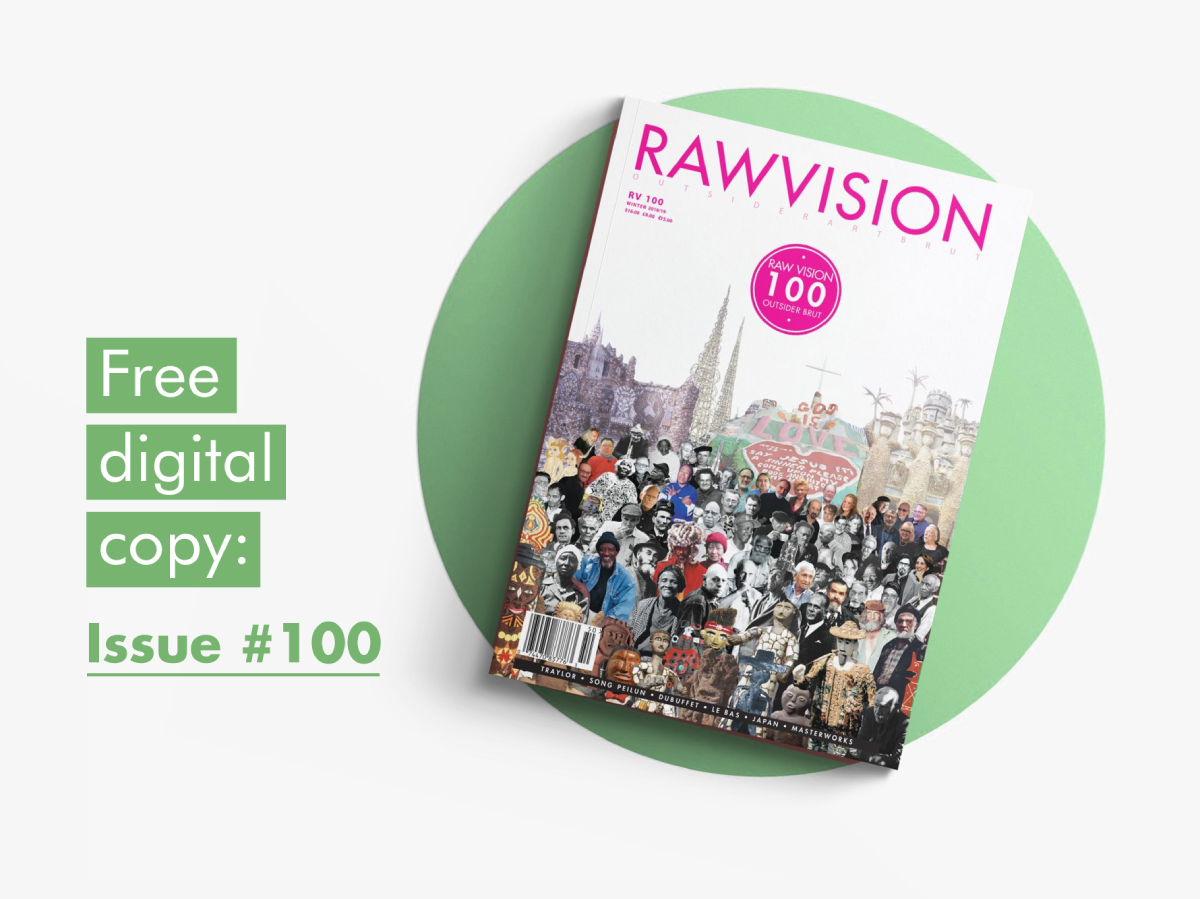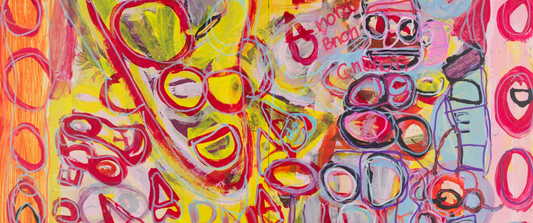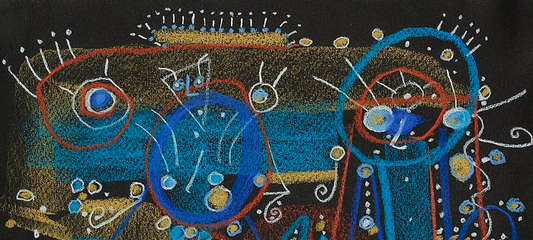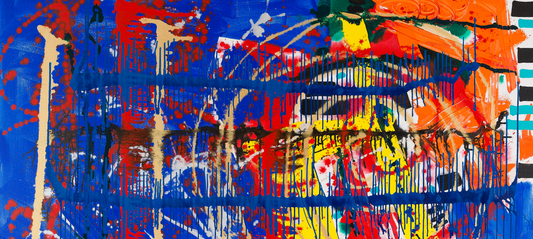First published: Summer 2025
For English artist Mary Barnes, it was psychosis, radical treatment and an unorthodox relationship with her doctor that began her creative journey
Mary Edith Barnes was born in Portsmouth,
on England’s south coast, in 1923. She trained
as a nurse, later joining the British Army and
working in hospitals in Egypt and Palestine from 1945
to 1946. Back in the UK, at around the age of 30, she
experienced a mental health crisis leading to her
hospitalisation and a diagnosis of schizophrenia, a
condition for which her younger brother had already
been institutionalised.
Reading up on her diagnosis, Barnes became aware
of the work of the Glaswegian psychiatrist and countercultural
figure, Dr RD (Ronnie) Laing, author of The Divided Self: An Existential Study in Sanity and Madness (1960). This
led her to Kingsley Hall, a radical therapeutic community
in Bow in East London.

The Three Stages of Sacrifice, 1991, oil on board, 30.5 x 24 in. / 77.5 x 61.5 cm Courtesy: Falkland Estate
Established in 1965 and headed
up by Laing, it was an unconventional centre where
mental-health professionals and those experiencing
mental illness lived together. Drug-taking and all-night
parties were common, reflecting the spirit of the
Swinging Sixties and beliefs espousing consciousnessraising
and expansion of awareness. Laing and his
followers created a permissive space where mental illness
was reframed as spiritual awakening, akin to a shamanic
experience, and those encountering psychosis were
valued and supported rather than medicated and
incarcerated. Laing believed that people had to
breakdown to breakthrough and so the residents
of Kingsley Hall were urged to delve into and live
through their illness and distress in order to recover
and be reborn.

Untitled (from “IT” series), 1968, mixed media, 53 x 21.5 in. / 134.5 x 54.5 cm; courtesy: Wellcome Collection
Barnes was encouraged to regress at Kingsley Hall and, as she herself said, “was going down” whilst being cared for by Dr Joseph Berke, an American psychoanalyst who had moved to the UK to work with Laing. In his first encounter with Barnes, she lay naked in a foetal position in a shroud-like box on the floor, and the pair went on to form an intense, unorthodox relationship. It was Berke who suggested Barnes express herself through art. She did this using her own excrement on the walls of Kingsley Hall and, when her fellow residents complained (her room was adjacent to the kitchen), Berke gave her art materials, saying: “Here, scribble”. Barnes began to cover the walls with enormous murals often featuring religious imagery. It marked the beginning of an artistic journey that she described as integral to her recovery from mental illness.

Our Lady Star of the Sea, 1977, oil on board, 20 x 16 in. / 50.5 x 40.5 cm. Courtesy: Falkland Estate
By VICTORIA TISCHLER
This is an article extract; read the full article in Raw Vision #123.




